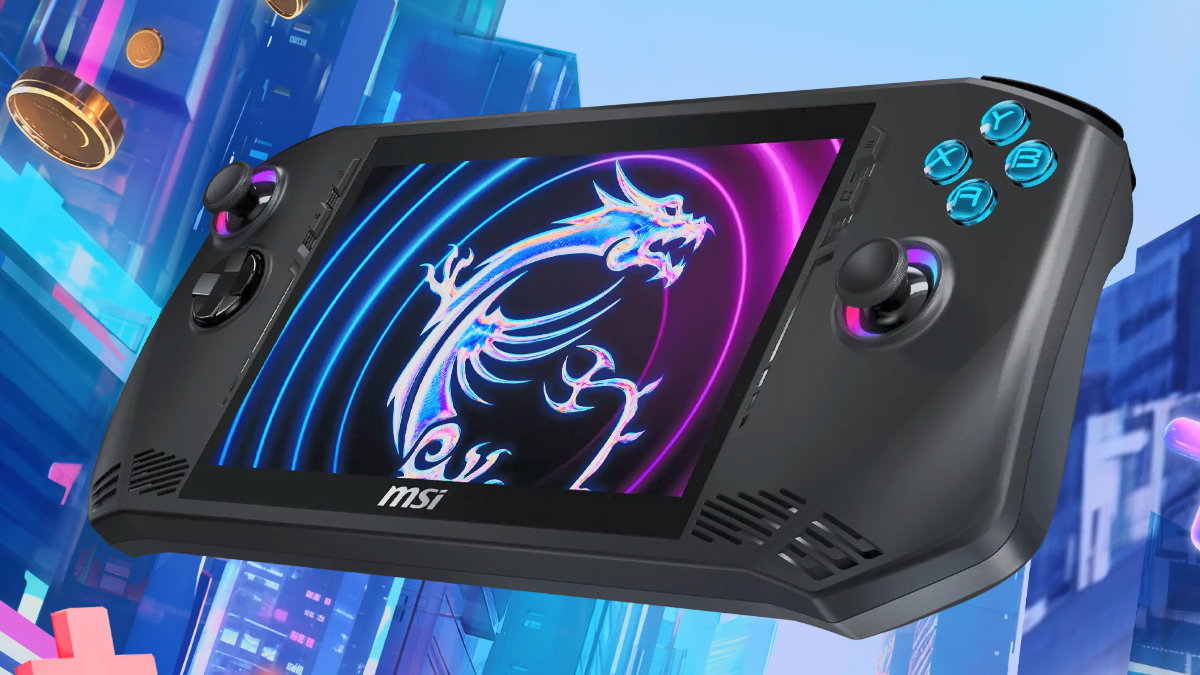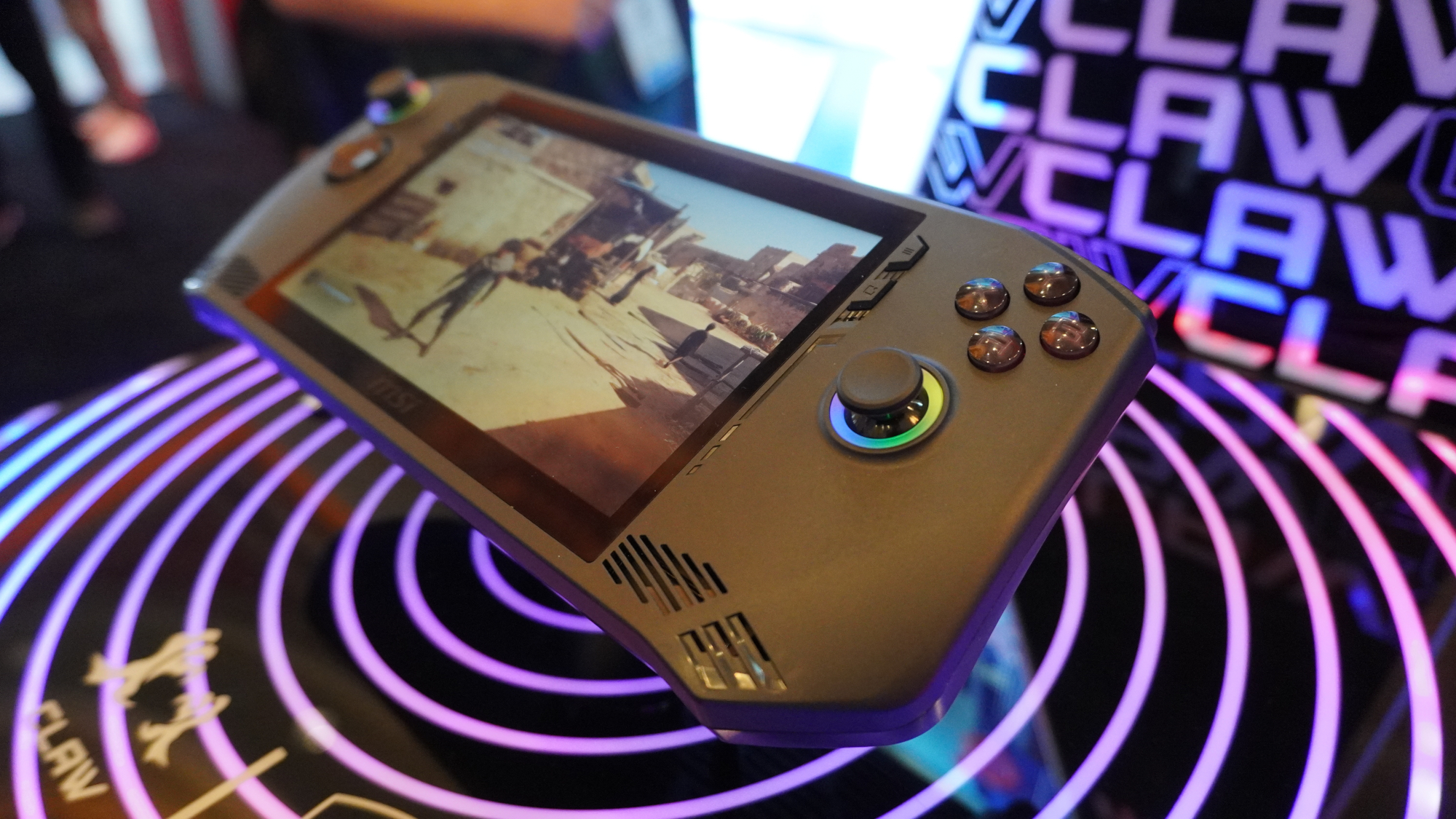
The MSI Claw release date in the U.S. has finally been confirmed, and we can barely contain our Christmas Day-aping glee. This is the most exciting gaming handheld PC since Steam Deck OLED. We think this Windows 11-powered device has the potential to be truly special.
Whether the MSI Claw goes onto match the breakout sales success of the original LCD Steam Deck remains another matter, but gamers in the U.S. won’t have long to wait to decide whether they want to be Team Deck or Team Claw (or if your wallet is fat enough, you could pick up both handhelds).
Though U.S. pre-orders don’t appear to be live at time of writing on the official MSI Claw site the handheld will launch in the States on March 8 (thanks, VideoCardz). There will be three configurations of the Claw available at first (all powered by Intel Meteor Lake chips), though the cheapest won’t go on sale in the U.S. until March 15.
The first model to arrive comes with an Intel Core Ultra 7 155H processor and 512GB of storage and costs $749. That’s a good chunk more change than the starting Steam Deck OLED, which is aggressively priced at $549. A 1TB version is set to launch for $799 on March 15, which is the same day the less powerful MSI Claw debuts. That model rocks an Intel Core Ultra 5 135H CPU and will be available for $699. All three versions of the Claw come with the same 7-inch 1080p LCD display.
As for U.K. availability, MSI Claw is available to pre-order starting from £699 at Currys, with the system launching in Blighty on March 20. U.K. gamers have the choice of the Intel Core Ultra 5 version that comes with 512GB of storage for £699, while the Ultra 7 1TB model costs £799.
Could MSI Claw topple Steam Deck?

Valve’s sensational system (particularly its upgraded OLED model) is the best gaming handheld for PC gamers in our opinion here at Tom’s Guide. Yet in my computing colleague Tony Polanco’s MSI Claw hands-on review he is full of praise for the latest pocket-friendly PC to hit the market. Though seeing as it measures in at 11.5 x 4.6 x 0.8 inches, you’d probably need a pair of pants befitting dearly-departed WWE great Doink the Clown for said pocketability.
Part of the reason Tony is such a big fan of what he’s seen of MSI Claw so far is largely down to its screen. “Games look stunning on its sharp 1080p display”, and it certainly helps its panel sports a refresh rate of 120Hz. For context, Steam Deck OLED tops out at 90Hz, the original Deck just 60Hz, with both of Valve’s models having a screen that’s essentially a 16:10 version of 720p with the actual pixel count coming in at 1200 x 800.
The $699 Lenovo Legion Go boasts an even more impressive refresh rate than the Claw at a stunning 144Hz, with a higher screen resolution of 2,560 x 1,600 to boot. Though demanding games like Cyberpunk 2077 obviously can’t hit 2K resolution at such a speedy refresh rate. Nevertheless we currently rate the Legion Go as the best Windows handheld, so that’s the first machine MSI should be looking to dethrone when we bring you our final MSI Claw review in the coming weeks.
The Claw’s Intel Core CPU should certainly help its cause thanks to the previously mentioned Meteor Lake factor, as these chipsets use the same Intel XeSS tech as the company’s Arc GPUs. What this means for MSI Claw is it’s able to tap into Intel’s image upsampling rival to AMD FSR and the still class-leading Nvidia DLSS, so games run at a lower resolution, then the Claw uses machine learning to upscale the on-screen resolution. The main benefit of this is a boost to frame rates in games. Though Tony couldn’t see a frame rate counter when playing Assassin’s Creed Mirage on MSI’s handheld, the results “ran buttery smooth”.
Personally, I love Steam Deck OLED way too much for any device to replace that as my main gaming handheld of the moment, but being able to play Xbox Game Pass titles on a hugely promising Windows 11 device has me at least semi-tempted by MSI Claw.







